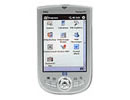'ZDNET Recommends': What exactly does it mean?
ZDNET's recommendations are based on many hours of testing, research, and comparison shopping. We gather data from the best available sources, including vendor and retailer listings as well as other relevant and independent reviews sites. And we pore over customer reviews to find out what matters to real people who already own and use the products and services we’re assessing.
When you click through from our site to a retailer and buy a product or service, we may earn affiliate commissions. This helps support our work, but does not affect what we cover or how, and it does not affect the price you pay. Neither ZDNET nor the author are compensated for these independent reviews. Indeed, we follow strict guidelines that ensure our editorial content is never influenced by advertisers.
ZDNET's editorial team writes on behalf of you, our reader. Our goal is to deliver the most accurate information and the most knowledgeable advice possible in order to help you make smarter buying decisions on tech gear and a wide array of products and services. Our editors thoroughly review and fact-check every article to ensure that our content meets the highest standards. If we have made an error or published misleading information, we will correct or clarify the article. If you see inaccuracies in our content, please report the mistake via this form.
HP iPAQ H1940


HP iPAQ H1940
pros and cons
- Super-compact
- improved performance
- sharp screen
- Bluetooth
- removable battery
- relatively inexpensive.
- Headphone jack is not standard-sized
- no protective cover included.
HP's iPAQ H1940 is effectively the H1910, with a faster processor, an updated operating system, Bluetooth and a Secure Digital (SD) slot that supports SDIO cards. With the introduction of the £299 (inc. VAT) H1940, the H1910 has had its price reduced to £199 (inc. VAT). HP still hasn't worked out how to give its most compact handheld a standard-sized headphone jack, so you need an adapter in order to use your favourite headphones with the H1940. And alas, there's no protective case included -- again. Those gripes aside, this is a sweet handheld that will appeal to those who can live without the iPAQ H2200's extra expansion slot.
Design
Like the H1910, the H1940 measures 6.98cm by 11.3cm by 1.28cm -- it's about 1.3cm shorter and narrower than most other Pocket PCs, which makes a big difference. And at just 124g, the H1940 won't tear your pocket seams.
At the bottom of the device is the elegant four-way navigation control. In its centre is the Select button, on either side of it are the standard Pocket PC quick-launch buttons, and hidden beneath it is the speaker. Unlike some handhelds, the H1940 doesn't have a scroll wheel, but that's a relatively minor omission.
The power button, located at the top of the device, contains an LED whose colour depends on the type of alert it's sending. Also up top is a slot for Secure Digital (SD) and MultiMediaCard (MMC) media and SDIO add-ons such as the upcoming SDIO WLAN 802.11b accessory. A Memo Record button and an infrared port adorn the unit's left side.
Again, as with the H1910, our only major design gripe is with the smaller than standard 2.5mm headphone mini-jack. Without an adapter, it accepts only the supplied earbuds or headphones that use an uncommon sub-mini-jack -- the kind you find on a mobile phone. And the included stylus may be a bit too small for some users. We suggest a pen-based stylus, but people will probably go with the tip of the middle or index finger instead.
To cut costs, HP doesn't include a cradle, just a cable that does double duty as a charging and syncing cord. A nicely designed cradle with a separate slot for charging a second battery is available as an option.
Features
As we said, all the changes to this model are under the surface. The amount of built-in memory is still 64MB (although you can access only 56.7MB), but HP has upped the built-in ROM from 16MB to 32MB to accommodate the new Pocket PC 2003 OS. Just as important, this handheld runs on a 266MHz Samsung processor, which supposedly offers greater energy efficiency and speed rivalling that of Intel's 400MHz XScale processor (see the Performance section). Bluetooth is here, and the top-notch transflective 16-bit colour TFT screen is the same one found on the H1910 and this year's other iPAQs.
The battery is removable, enabling you to swap in an optional extra cell -- a big plus. However, the H1940 is incompatible with older iPAQ expansion sleeves and accessories.
Don't expect much in the way of software extras. You get the usual assortment of demos; the full suite of Microsoft applications, including the Pocket versions of Word, Excel, Internet Explorer, Windows Media Player, Reader and Streets; and a data-backup program. HP throws in an image viewer, but you also get one with the new OS.
Performance
Comparing the H1940 with the older model, we immediately noticed a big performance boost. Video and certain games ran much more smoothly. For example, playing Hexacto's baseball game was difficult on the H1910 because of swing-timing issues. On the H1940, it literally became a whole new ball game, and we were suddenly able to pepper the field with hits. We can't tell whether the improvement is more attributable to Windows Media 9 or the new processor.
Sound is quite good -- supposedly the Windows Media Player upgrade raised the quality. But because HP went with the 2.5mm headphone mini-jack, you'll have to listen through the less-than-impressive included earbuds unless you get an adapter for standard headphones.
We were particularly impressed with the transflective screen, which appears to be one of the best on the market. Indoors, it's brighter than that of Toshiba's e330 and e335, and its white background has less grey. The display also did well outdoors; reading text in bright sunlight was no problem.
Battery life was respectable, considering the unit's small 900mAh battery. Playing MP3 files with the backlight on, the H1940 lasted 3 hours and 46 minutes. However, that's nothing compared with the Toshiba e330's 4 hours and 16 minutes or the Dell Axim X5's 6 hours and 22 minutes. At the more demanding task of playing MPEG-1 videos in PocketTV with the backlight at its standard setting, the unit lasted just 2 hours and 52 minutes.